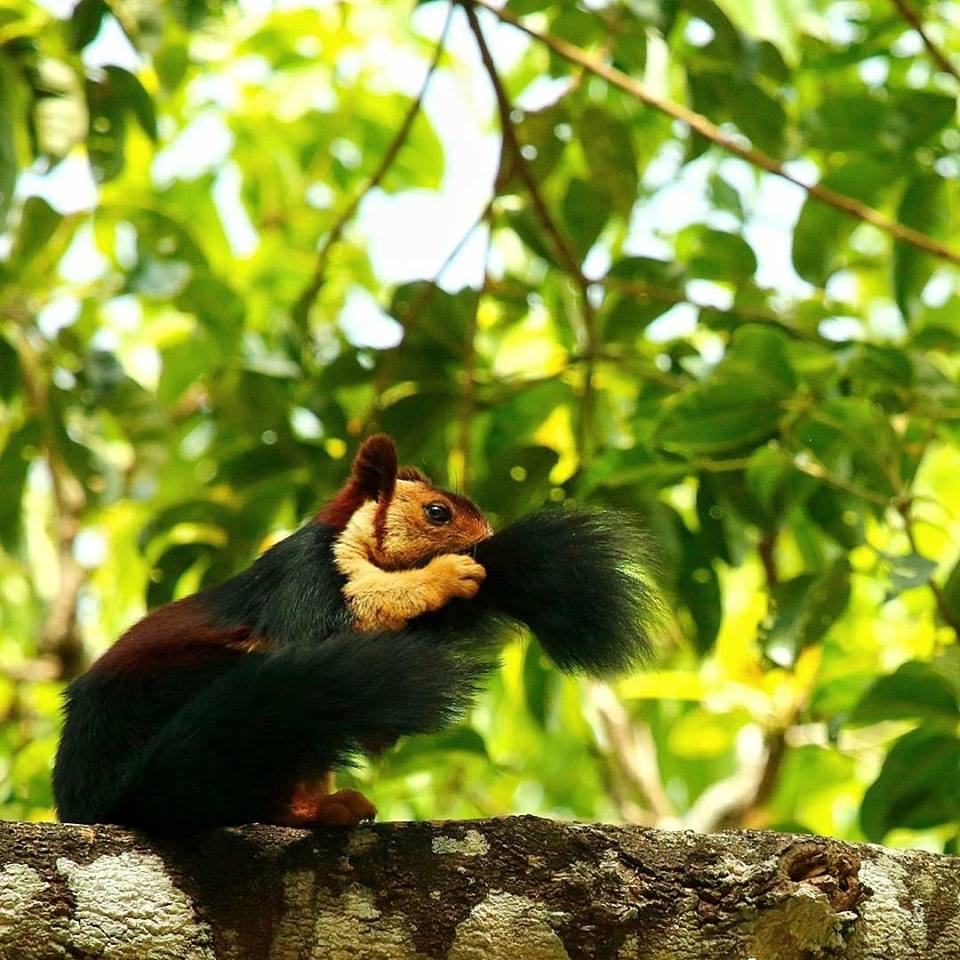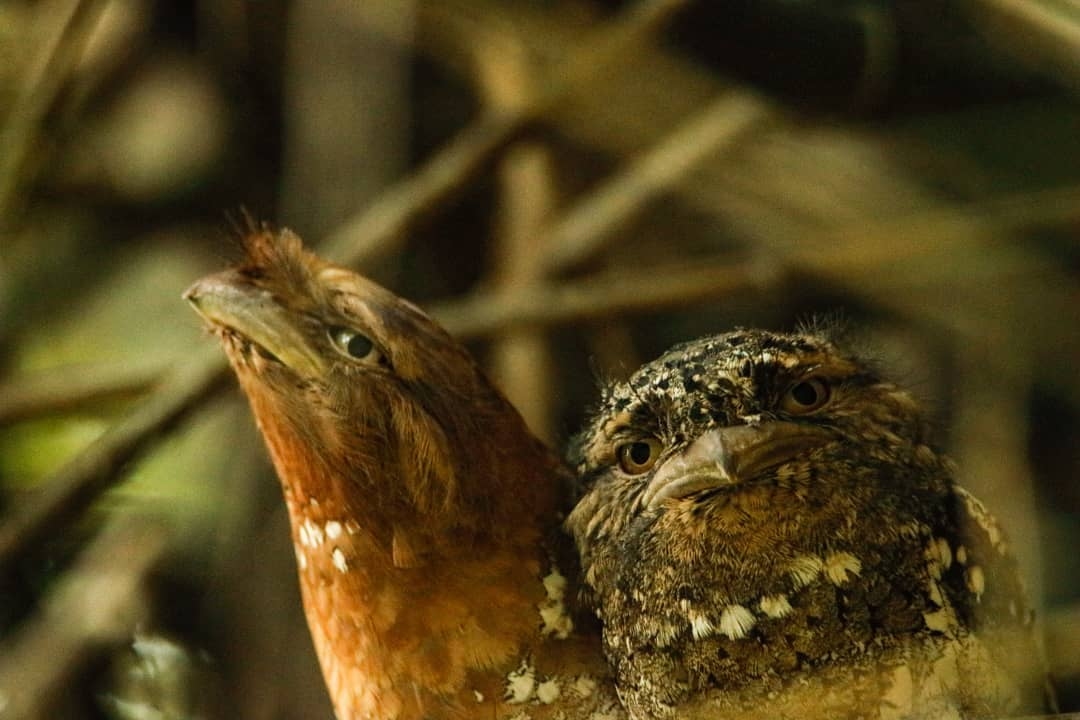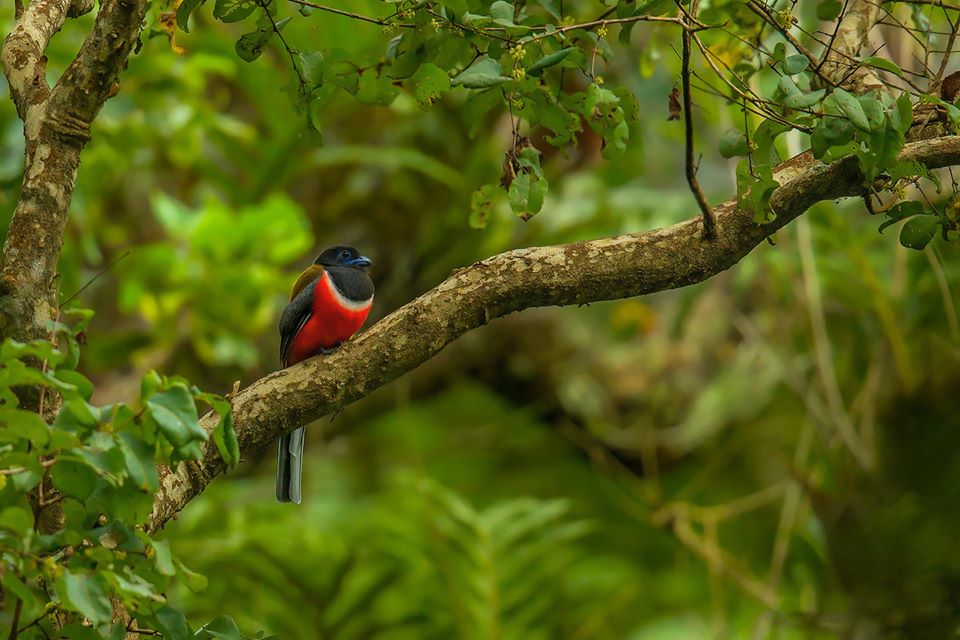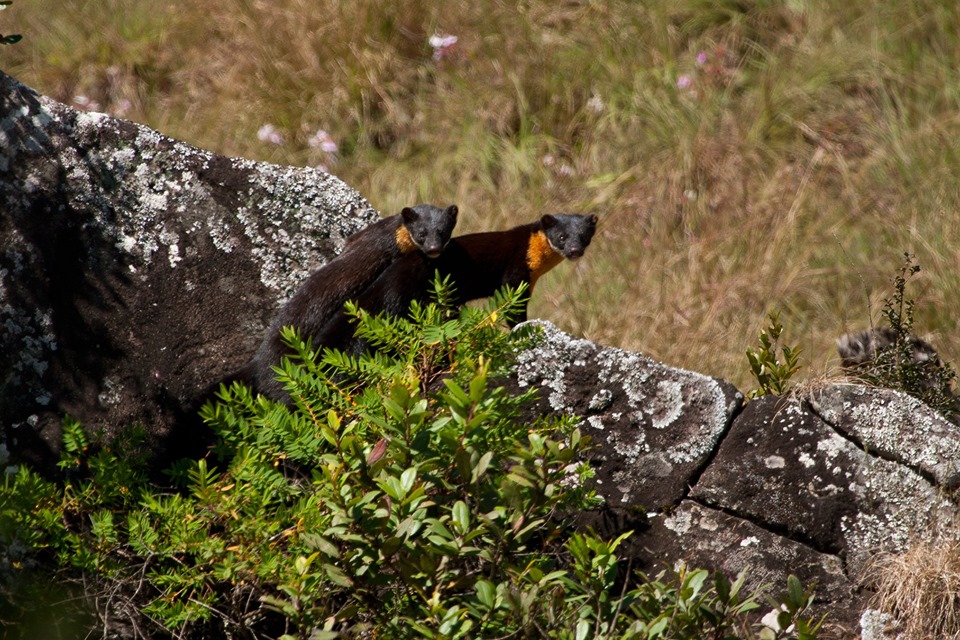Walking through the rainforests of the Anamalais, one is sure to hear a loud staccato call trailing to soft chirps. Looking up to trace its origin may give you a crick in the neck but carefully scanning the tree tops for movement may reveal the source. To your surprise, it’s a large squirrel with a long, bushy tail and tufted ears peering down at you.
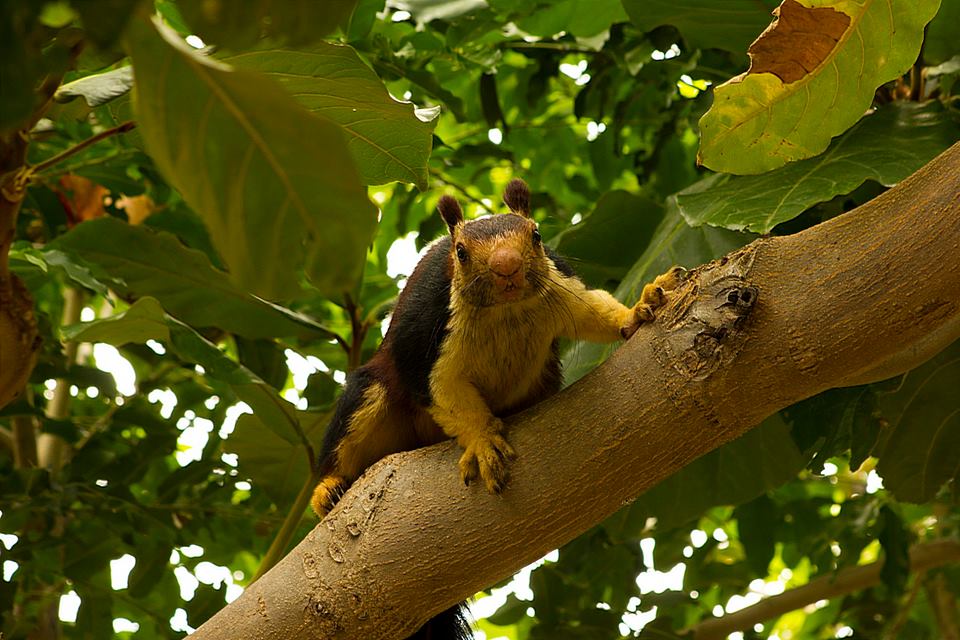
It may even descend to a lower branch to get a good look at you, giving you an opportunity to marvel at its colorful pelage, maroon to black above, with a creamy white belly and long bushy black tail. This is the Indian Giant Squirrel also called the Malabar Giant Squirrel, a large arboreal mammal that inhabits the forested areas of Peninsular India. They are distributed all along the Western Ghats, the Satpudas and the Chota Nagpur plateau as well as in isolated patches in the Eastern Ghats.
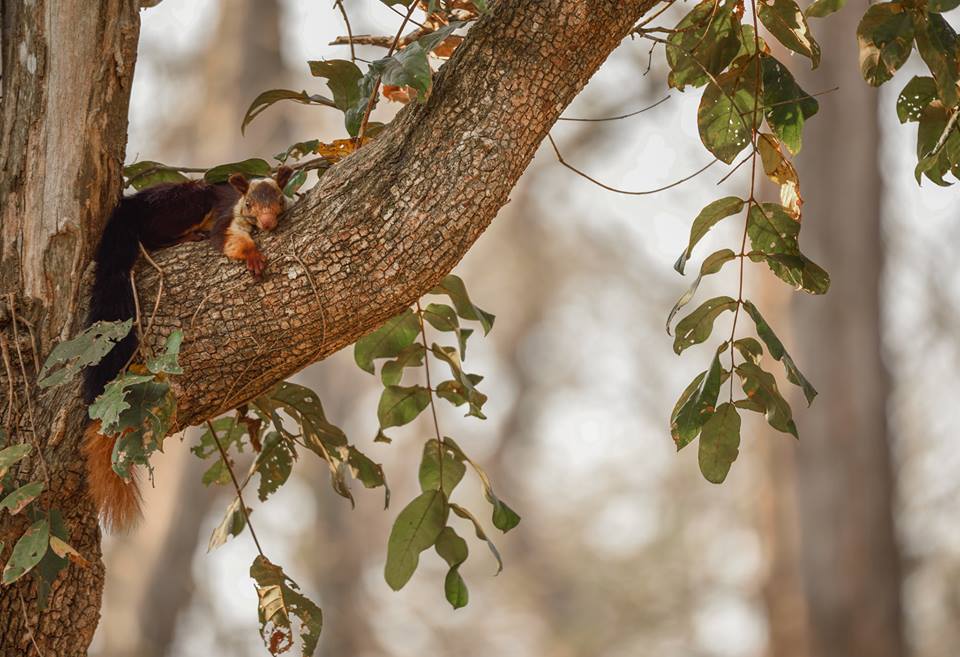
There are four subspecies recognized and if spotted in other parts of its range, you would be forgiven if you didn’t recognize it. Such is the variation in its coat color which is thought to be an adaptation to the habitats that it lives in areas with less rainfall and more open forests. They prefer forests with continuous tree canopies and tree species diversity.
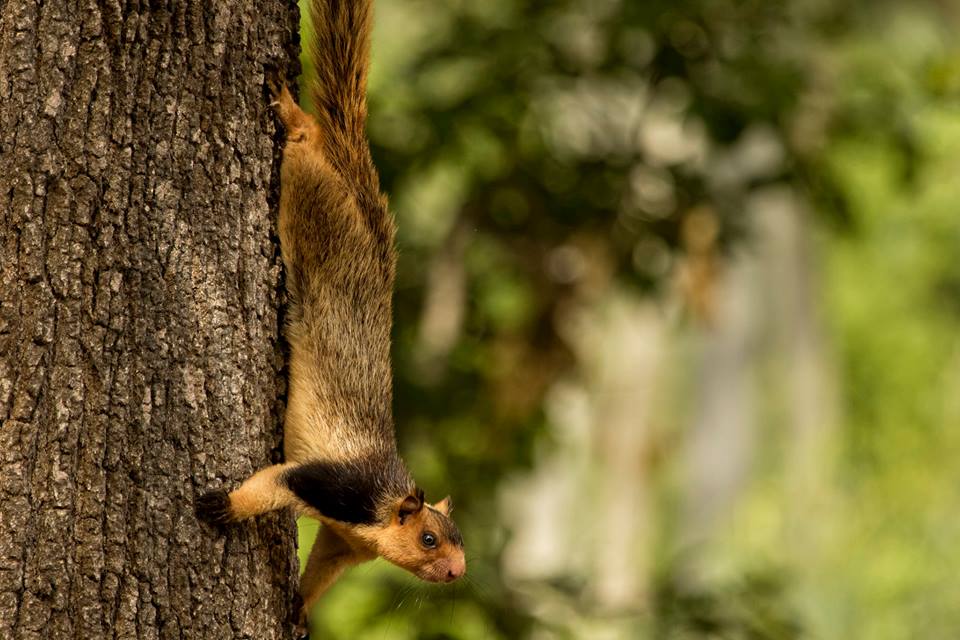
They have also been recorded to interbreed with a closely related species, the Grizzled Giant Squirrel found on the eastern slopes of the southern Western Ghats. Here in the Anamalais, one can find them in the Chinnar range of Anamalai Tiger Reserve.
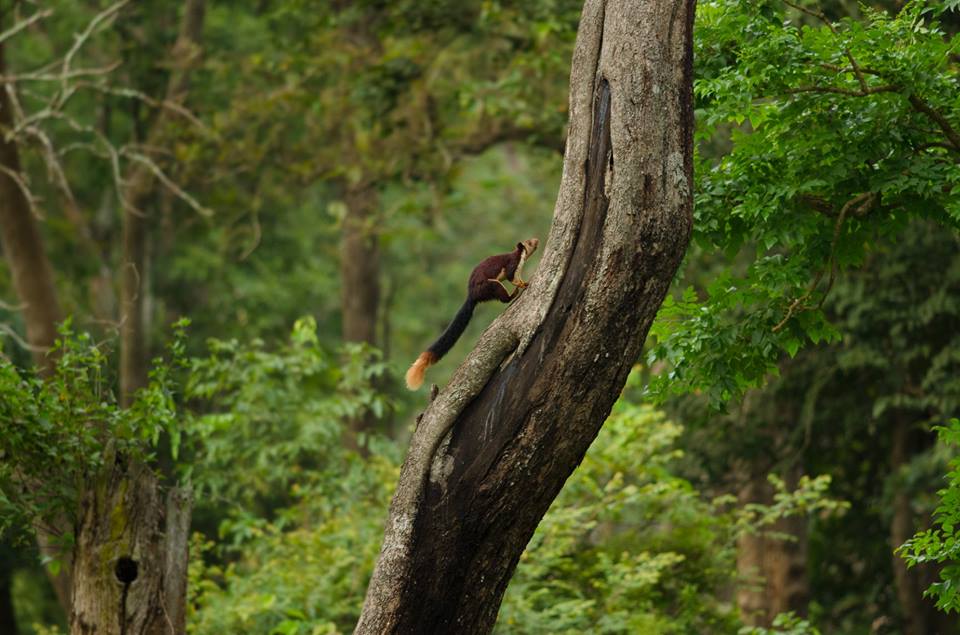
The Indian Giant Squirrel is supremely adapted to its arboreal life. It is agile and can be seen leaping between crowns of trees using its long tail as a stabilizer. It often feeds suspended only by its hind legs. It feeds on many species of fruits, leaves, flowers, nectar, bark and tree sap. Since they rarely descend to the ground, their water requirements are met by the plant matter they consume, though they have been reported to drink from tree cavities with water and dew from leaves.
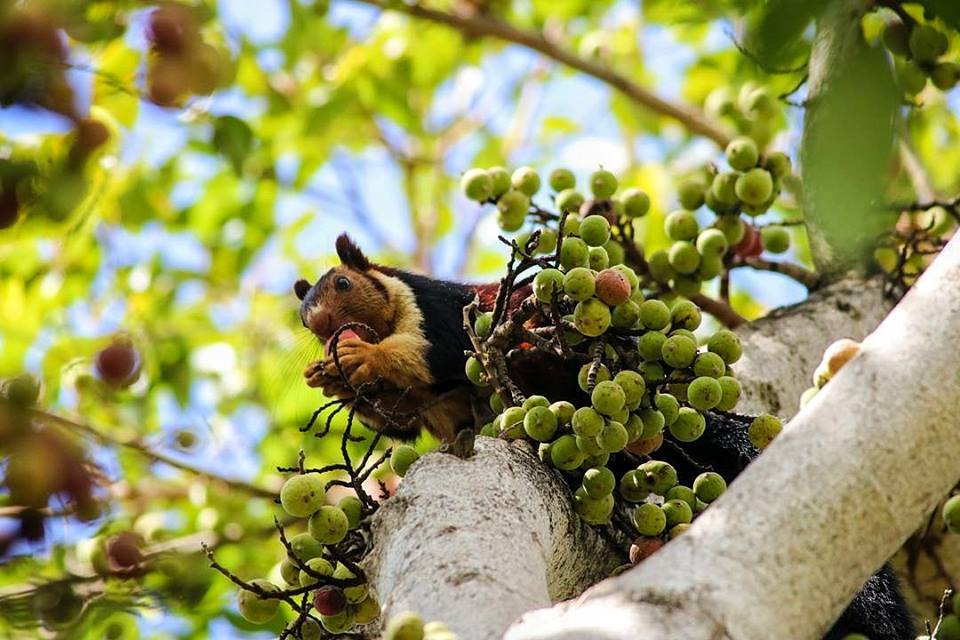
Occasionally, they may consume termites and other bugs. They are also reported to eat soil, which may be a way of neutralizing the chemicals consumed due to their varied diet. Ecologically, the giant squirrels are major seed predators. They also compete for fruit resources with other animals such as the Lion-tailed macaques, large birds like the hornbills and pigeons.
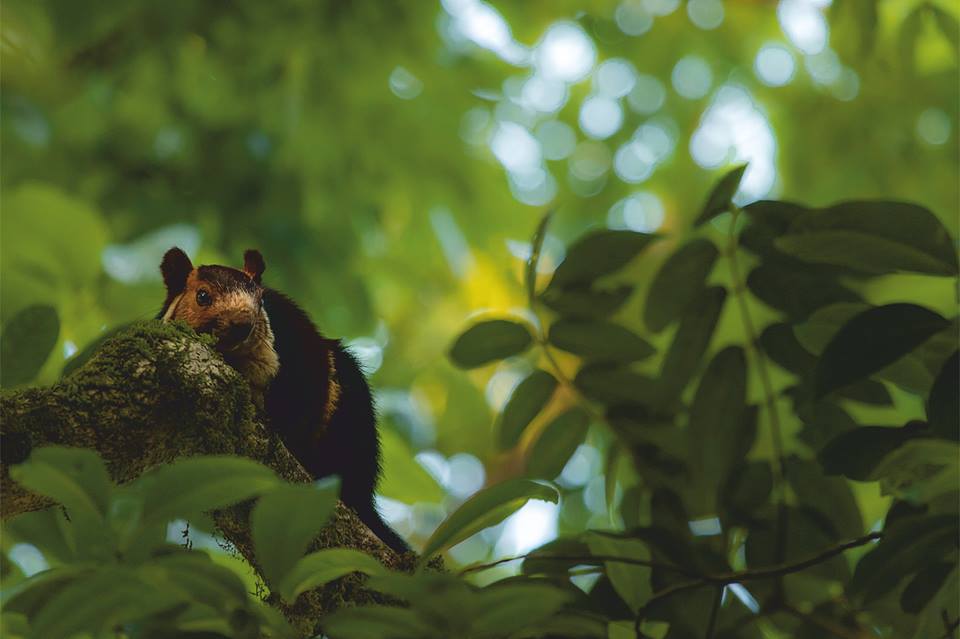
The distinct call that first helped you spot the squirrel is also an important signal to other squirrels about its territory. Largely solitary, many individuals have overlapping ranges with an exclusive territory that an individual defends with calls and scent markings. They also produce other calls, soft clicks while moving from tree to tree while foraging.
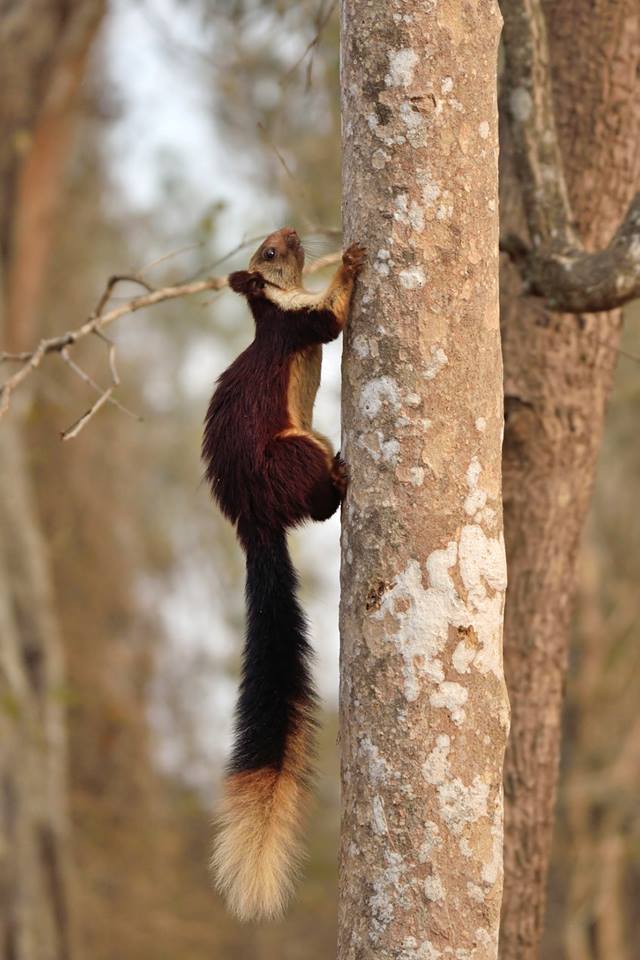
A squirrel makes many nests in its territory. The nests are dome shaped, made of twigs and leaves. They can be readily spotted in deciduous forests especially in the dry season but can be very hard to distinguish in the evergreen forests of the Western Ghats. October and November are the time of the year when squirrels breed in the southern Western Ghats. Only a single pup is born after a short gestation of between 25-35 days in a nursery nest. In about a month, it starts exploring its surroundings and accompanies the mother a couple of months thereafter.
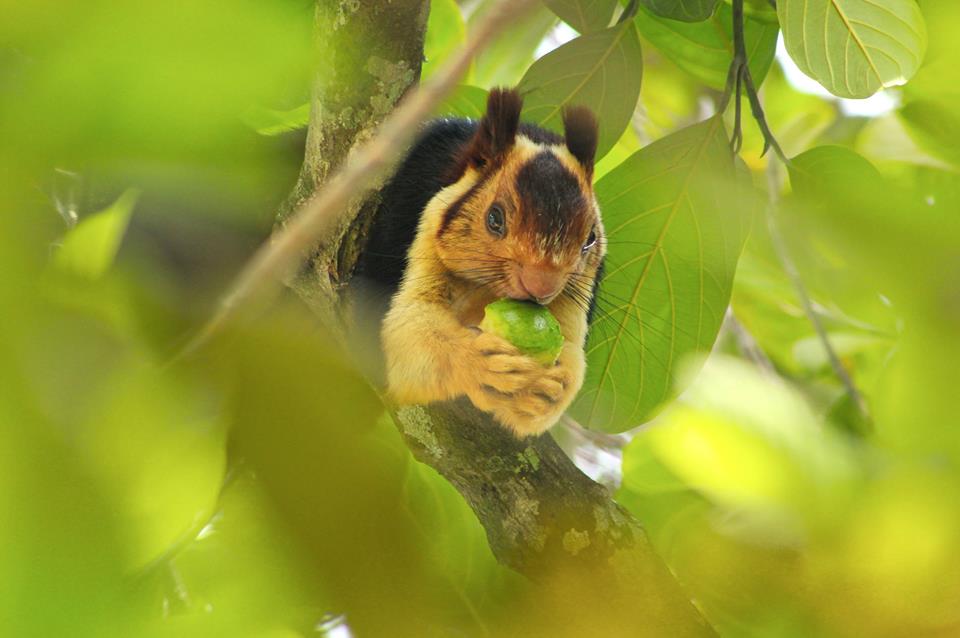
During my fieldwork in the Kalakad- Mundanthurai Tiger reserve, I had the opportunity to observe the squirrels closely. They are very inquisitive creatures and would come close to see who was perched up on the tree. One individual seemed to accept me as part of its territory and came up and rested its forepaws on my feet to get a closer look. A few months later, I saw the same individual being chased by a pair of Nilgiri martens through the canopy and only its acrobatics saved him from being made a meal of.
Conservation Status:
It is listed in the IUCN Red data book as ‘least concern’ but this beautiful squirrel faces perils as its habitat is shrinking. Currently, recognised as one species, all four of the subspecies may be elevated to species rank and be listed as endangered or even extinct as maybe the case of the albinistic R.indica.dealbata, a sub-species formerly inhabiting the dry forests of the Surat dhangs at the Northern tip of the Western Ghats but not seen since 1948.
Threats:
Though listed in the schedule II of the Wildlife Protection Act, 1972, its flesh is much prized as being medicinal and hunted for the same and to a lesser extent for pet trade. Although distributed widely through its range, its preference for mature forest restricts its occurrence and severely fragments its populations. Due to its habitat preferences for diverse forests with mature, unbroken tree canopies, this species could be used as indicators of forest health and also its suitability for other charismatic species such as the lion-tailed macaque or the Great Hornbill.

